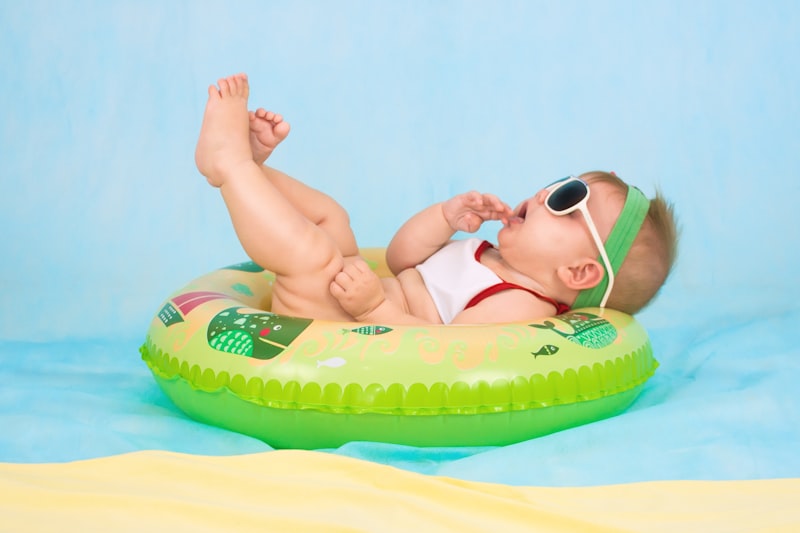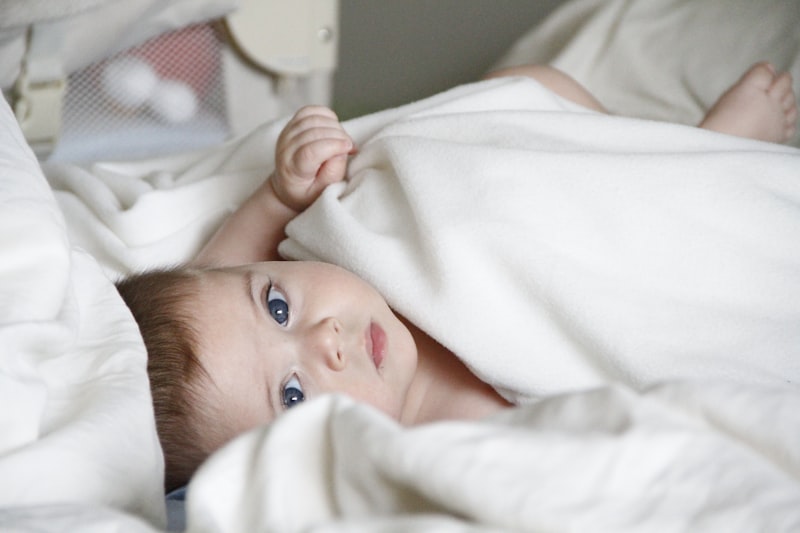Next, always check for certifications. It’s like having a good friend vouch for something—only here, it’s an independent organization. Look for labels like ASTM or JPMA which ensure the product meets rigorous safety standards. If you’re buying toys, for example, ensure they’re labeled as non-toxic and have no small parts that could pose a choking hazard.
Also, consider the product’s age appropriateness. Just as you wouldn’t give a toddler a toy meant for an older child, ensure the products you choose match your baby’s developmental stage. This ensures they’re not only safe but also beneficial as your baby grows.
Lastly, don’t forget to read reviews. It’s like having a sneak peek into other parents’ experiences. Real feedback from other families can be incredibly helpful, revealing potential issues or highlighting excellent features you might not have considered.
Choosing the right baby products is a bit like putting together a puzzle. Each piece needs to fit just right to ensure your little one’s safety and comfort. Keeping these tips in mind will help you create a secure environment for your baby to thrive in.
The Ultimate Guide to Picking Safe Baby Products: What Every Parent Needs to Know
Think of baby products like a high-stakes game of trust. When you’re shopping, look for certifications from trusted organizations. These little stickers and labels aren’t just for show—they represent a product’s ability to meet safety regulations and pass stringent tests. For instance, cribs should comply with the latest safety guidelines to prevent hazards like entrapment or strangulation.
But it’s not just about checking off boxes. Consider the materials used. Opt for items free of harmful chemicals like BPA or phthalates, which can be found in some plastics. Imagine your baby’s delicate skin as a sponge, soaking up everything it touches. You’d want that sponge to only absorb the safest, cleanest materials, right?
Next, look into the brand’s reputation. A brand with a solid track record in safety is like a trustworthy friend—you know they have your best interests at heart. Read reviews and seek recommendations from other parents. Their experiences can offer invaluable insights beyond what you’ll find on a product label.
And let’s not forget about functionality. Safe baby products aren’t just about what they’re made of; they should also be user-friendly. If a stroller is so complicated it takes a degree in engineering to fold it, it’s probably not the best choice. Ease of use ensures that safety features aren’t just theoretical but practical.
Navigating the sea of baby products might seem overwhelming, but with a keen eye for safety and a little due diligence, you’ll ensure your baby’s environment is as safe as it is snug.
Safety First: How to Navigate the World of Baby Products Without Compromise
Start by thinking of baby products like you would a helmet for a bike ride. It’s got to fit well, be made from quality materials, and meet rigorous safety standards. For cribs, for example, check if they meet the latest safety regulations. A sturdy crib with slats no more than 2.375 inches apart is a must. It’s like ensuring your bike helmet has all the right certifications to keep your head safe.
Then there are those irresistible, colorful toys. While they might seem like the perfect distraction for your baby, always inspect them for choking hazards. Toys should be large enough so they can’t be swallowed or inhaled. Think of it like checking the brakes on your bike before a ride; you wouldn’t take chances with them, so don’t take chances with your baby’s toys.
And what about baby gear like strollers and car seats? Imagine these as the safety gear for your baby’s daily adventures. Strollers should have a solid, easy-to-use harness system and a sturdy frame. Car seats need to be properly installed and meet the latest safety standards to protect your little one in any car ride.
Choosing baby products is a bit like preparing for a big adventure—you need the right gear, and it has to be reliable. So, stay informed, check reviews, and always prioritize safety. Your baby’s world is safer and more secure with every thoughtful choice you make.
10 Red Flags to Watch for When Choosing Safe Baby Products
First off, beware of products with vague safety claims. If a baby item promises to be “safe” but doesn’t specify how or why, that’s a red flag. It’s like buying a mystery box—exciting but risky! Look for specific certifications or standards, like ASTM or JPMA, that back up their safety assertions.

Another warning sign is the absence of detailed product information. If you can’t find a clear list of materials used or detailed care instructions, that’s a cause for concern. Think of it like buying a new gadget with no manual—you’re left guessing how to use it safely.
Also, keep an eye out for products that are too good to be true. Deep discounts on high-end baby gear might mean corners were cut during manufacturing. Quality doesn’t come cheap, and it’s worth investing in reliable products.
Additionally, check for strong or unpleasant odors. A new baby product should not have a chemical smell. That’s like walking into a room with a strong, unpleasant odor—you’d be better off avoiding it!
Lastly, be cautious of items with small, detachable parts. Babies are naturally curious and prone to putting things in their mouths. Small parts could pose a choking hazard, so they should be avoided like the plague.
Choosing safe baby products isn’t just about picking the first thing you see. It’s about staying alert and informed to ensure your little one is wrapped in safety and comfort.
From Cribs to Car Seats: Expert Tips for Ensuring Your Baby’s Safety
First up, consider the crib. Think of it as your baby’s personal fortress. Ensure it meets the latest safety standards, with slats no more than 2 3/8 inches apart to prevent any risky escapades. Opt for a firm mattress that fits snugly in the crib—there should be no gaps where your baby could get stuck. Also, keep the crib free of loose bedding, pillows, or stuffed animals. These can pose suffocation risks.
Now, let’s roll into car seats. Choosing the right one is like picking a protective cocoon for your baby. Make sure it’s age-appropriate—rear-facing seats are a must for infants up to at least 2 years old, as they offer the best protection for the head, neck, and spine. Installation is key; it should be tight and secure. Many parents find it helpful to have a professional check the installation for peace of mind.

And don’t overlook the importance of harnessing your baby correctly. The straps should be snug, lying flat against your baby’s chest, and you should be able to slide just one finger between the harness and their chest. A snug fit can be the difference between a safe journey and a risky one.
Incorporating these practices into your routine ensures that both the crib and car seat provide the ultimate safety for your baby, giving you one less thing to worry about and more time to enjoy those precious moments.
Frequently Asked Questions
How Do I Choose Safe Baby Toys and Gear
When selecting baby toys and gear, prioritize items made from non-toxic materials, ensure they meet safety standards, and check for small parts that could be choking hazards. Always choose products that are age-appropriate and follow safety guidelines for assembly and usage.
How Can I Verify the Safety Standards of Baby Products
Check for certification marks from recognized safety organizations, review product reviews and ratings, ensure compliance with national safety regulations, and examine any recalls or safety warnings related to the product.
What Are the Key Safety Features to Look for in Baby Products
When choosing baby products, look for features like sturdy construction, non-toxic materials, safety certifications, secure fastening systems, and easy-to-clean surfaces. Ensure items meet safety standards and are free from small parts that could be choking hazards.
What Common Chemicals Should I Avoid in Baby Products
Avoid baby products containing parabens, phthalates, formaldehyde, and synthetic fragrances, as these chemicals can be harmful to infants. Opt for products labeled as free from these substances to ensure better safety for your baby.
Are There Recommended Brands for Safe Baby Products
For safe baby products, look for brands that prioritize safety standards, use non-toxic materials, and have positive reviews. Always check for certifications and compliance with safety regulations.


